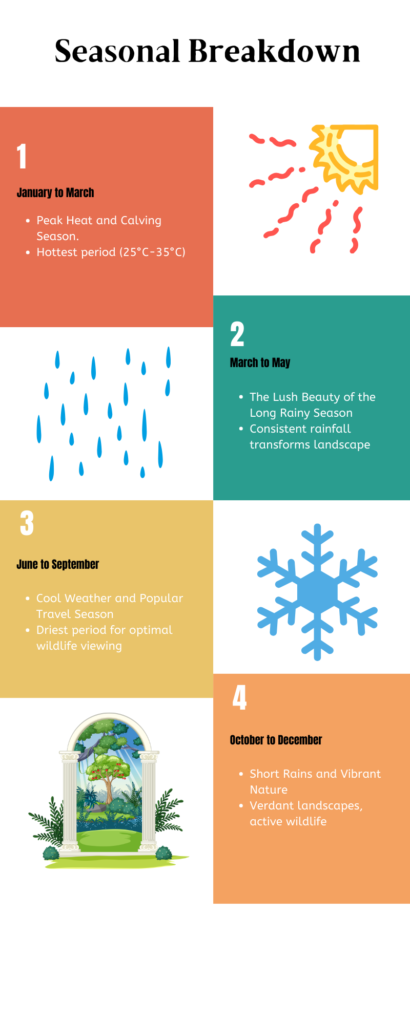Tanzania, with its diverse landscapes, rich wildlife, and vibrant cultures, stands as an enchanting choice for couples seeking a unique and unforgettable honeymoon experience. Nestled in East Africa, Tanzania offers a blend of romance, adventure, and natural beauty, setting the stage for an extraordinary honeymoon journey.
However, its varied climate and alternating dry and wet seasons mean the safari experience changes throughout the year.
So, when is the optimal time to plan your safari? Let’s explore Tanzania’s unique climate patterns, break down the distinct seasonal experiences, highlight key safari and wildlife considerations, uncover special opportunities for Tanzania honeymooners, and answer some frequently asked questions.
Understanding Tanzania’s Unique Climate and Seasons
Tanzania boasts a diverse climate influenced by its geographical variations.
Tanzania’s climate varies across its geographical regions, setting the stage for diverse safari experiences. Northern Tanzania enjoys a pleasant, subtropical climate, moderated by the altitude. In contrast, the coastal regions remain consistently hot and humid year-round, especially between November to March.
This climatic diversity is characterized by two primary seasons – a dry season and a rainy season. The timing and intensity of each season vary across Tanzania. Understanding the climate is crucial for planning the perfect honeymoon safari. Generally, the country experiences a tropical climate, with coastal areas being hot and humid, and highlands enjoying milder temperatures.
The Impact of Equatorial and Tropical Weather Patterns
Tanzania’s weather is affected by its location close to the equator, with a long coastline by the Indian Ocean. Because of this, Tanzania has a tropical climate.
Due to its proximity to the equator and the influence of winds from the Indian Ocean, Tanzania experiences cycles of rainy and dry seasons. These changes not only affect how animals move around but also impact when it’s ideal to go on a safari and explore national parks.
Along the coast, including places like Dar es Salaam, it’s always hot and humid with temperatures between 75-87°F. However, in northern Tanzania, in areas like Ngorongoro and Serengeti, the higher elevation results in cooler temperatures. Temperatures there range from 59-77°F.
Whether being on a beach getaway near the hot coast or exploring the wildlife-rich plains of the parks of Northern Tanzania, its equatorial position and the influence of the Indian Ocean winds create a diverse climate and distinct seasonal patterns.




